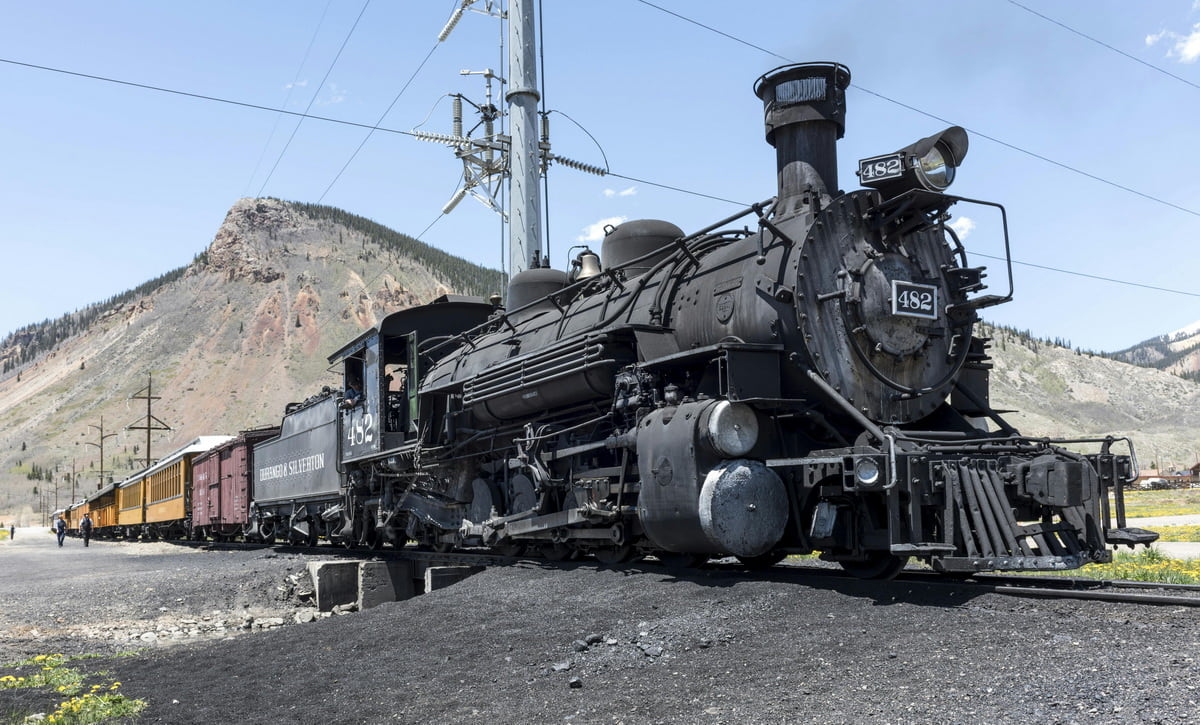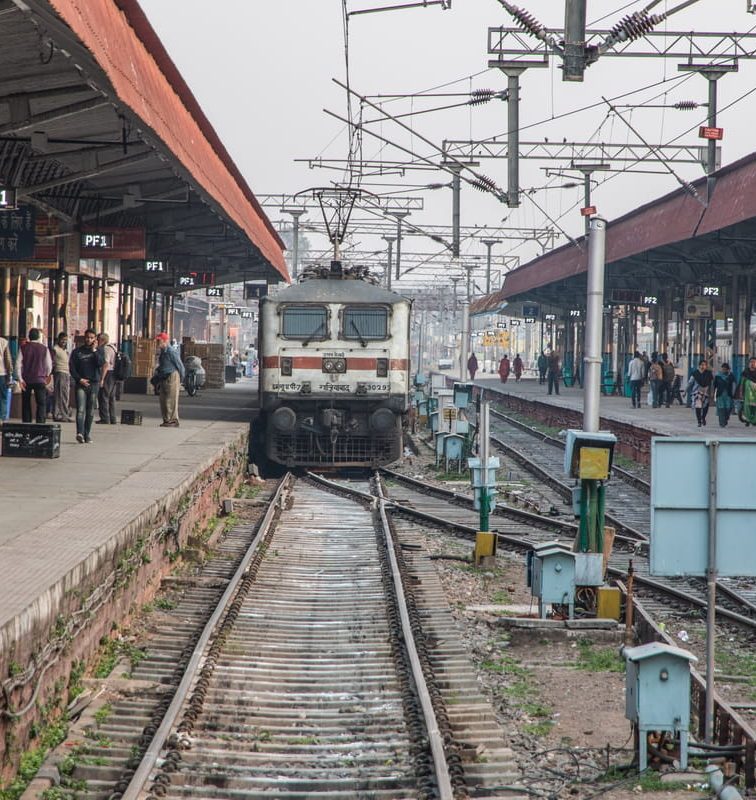Trains have long captivated our imagination, symbolizing both the grandeur of human achievement and the simple joy of journeying through landscapes unseen. From the astonishing fact that slime molds can replicate major U.S. train systems with uncanny accuracy to the engineering marvel of bullet trains surpassing 300 mph, the world of trains is filled with surprises.
Did you know that the engineer who designed Kamikaze planes also crafted the sleek body of the Japanese Shinkansen? Or that stray dogs in Russia have mastered the train schedules better than some commuters? These snippets barely scratch the surface of the intriguing universe trains inhabit. For a deeper dive into these marvels on rails, prepare to be enthralled by our collection of fun facts about trains.
1. The Fairy Queen’s Record
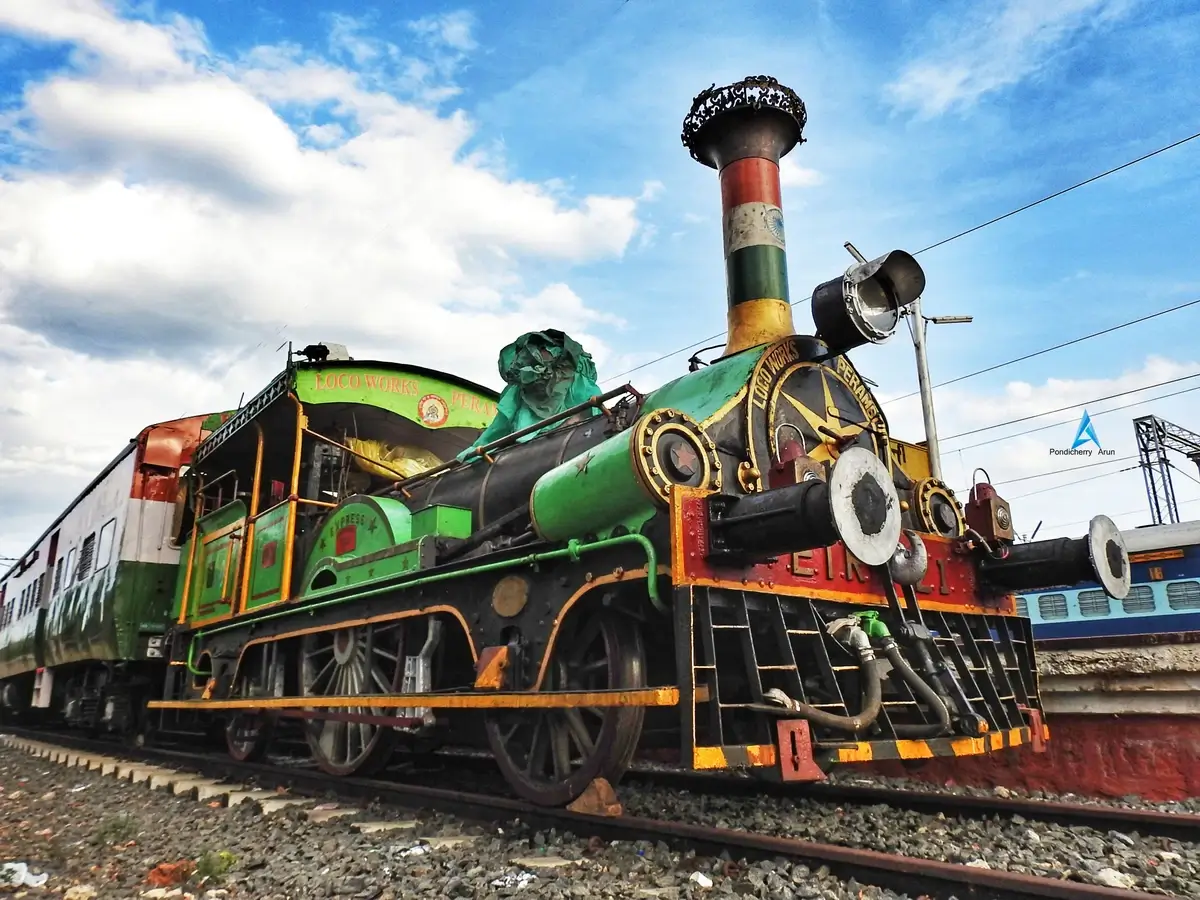
The Fairy Queen steam locomotive. Image: Pondicherry Arun / Flickr
The Fairy Queen, the world’s oldest operational steam locomotive, is a marvel of engineering and a testament to the rich heritage of rail travel. Built in 1855 and initially used for mail trains in West Bengal, this locomotive was later employed for troop transport during the Indian Rebellion of 1857 and construction duties in Bihar until 1909. After decades of service, it was retired but not forgotten.
Restored to its former glory in 1997, the Fairy Queen now embarks on heritage journeys from Delhi to Rewari, offering passengers a unique glimpse into the past. Recognized by the Guinness Book of Records in 1998 as the oldest steam locomotive in regular operation, its story captivates not just train enthusiasts but anyone drawn to history’s enduring legacy. This recognition was followed by a National Tourism Award in 1999, underscoring its significance as a unique and innovative tourism project.
2. Modern Bullet Trains Can Travel More Than 300 mph

Image: cnn.com
The evolution of bullet trains has redefined the boundaries of speed and efficiency in rail transport, propelling these marvels of engineering to speeds exceeding 300 mph. Initiated in 1964 with Japan’s Tokaido Shinkansen, also known as the bullet train, this innovation marked the dawn of high-speed rail, connecting Tokyo and Osaka and setting a precedent for future developments. China, not to be outdone, has accelerated the pace with its High-Speed Rail (HSR), boasting the longest HSR network globally and trains reaching speeds of 217 mph in regular service.
The quest for speed didn’t halt; Japan’s maglev train, the L0 Series, shattered records by achieving a staggering 375 mph during test runs in 2015, with plans to operationalize this technology for the Tokyo-Nagoya route, promising a travel time reduction to merely 40 minutes. Similarly, China’s CRH380A is a testament to technological prowess, entering service in 2010 and symbolizing the country’s rapid advancement in high-speed rail.
3. Steam vs. Diesel Trains: The Shift in Efficiency and Performance

Image: MNRails Productions / Flickr
The transition from steam to diesel locomotives in the mid-20th century marked a significant evolution in railroad transportation, driven by diesel’s superior efficiency, reliability, and cost-effectiveness. Diesel locomotives, introduced broadly in the 1940s, leveraged diesel engines to convert a higher percentage of fuel energy into useful work, allowing for greater pulling power and speed. They required less maintenance, had a longer operational life, and could operate longer without refueling, significantly reducing travel times and operational costs compared to their steam counterparts.
Steam locomotives, while powerful, were hindered by their need for frequent stops for fuel and water, high maintenance costs, and complex operation. Diesel’s advent brought engines that were not only more fuel-efficient but also environmentally friendlier, emitting fewer pollutants than steam’s coal or wood combustion. The efficiency rates starkly contrast, with steam locomotives averaging 11% efficiency, electric at approximately 20%, and diesel locomotives leading at 28%.
4. The London Underground, Initiated in 1863, Was the First of Its Kind
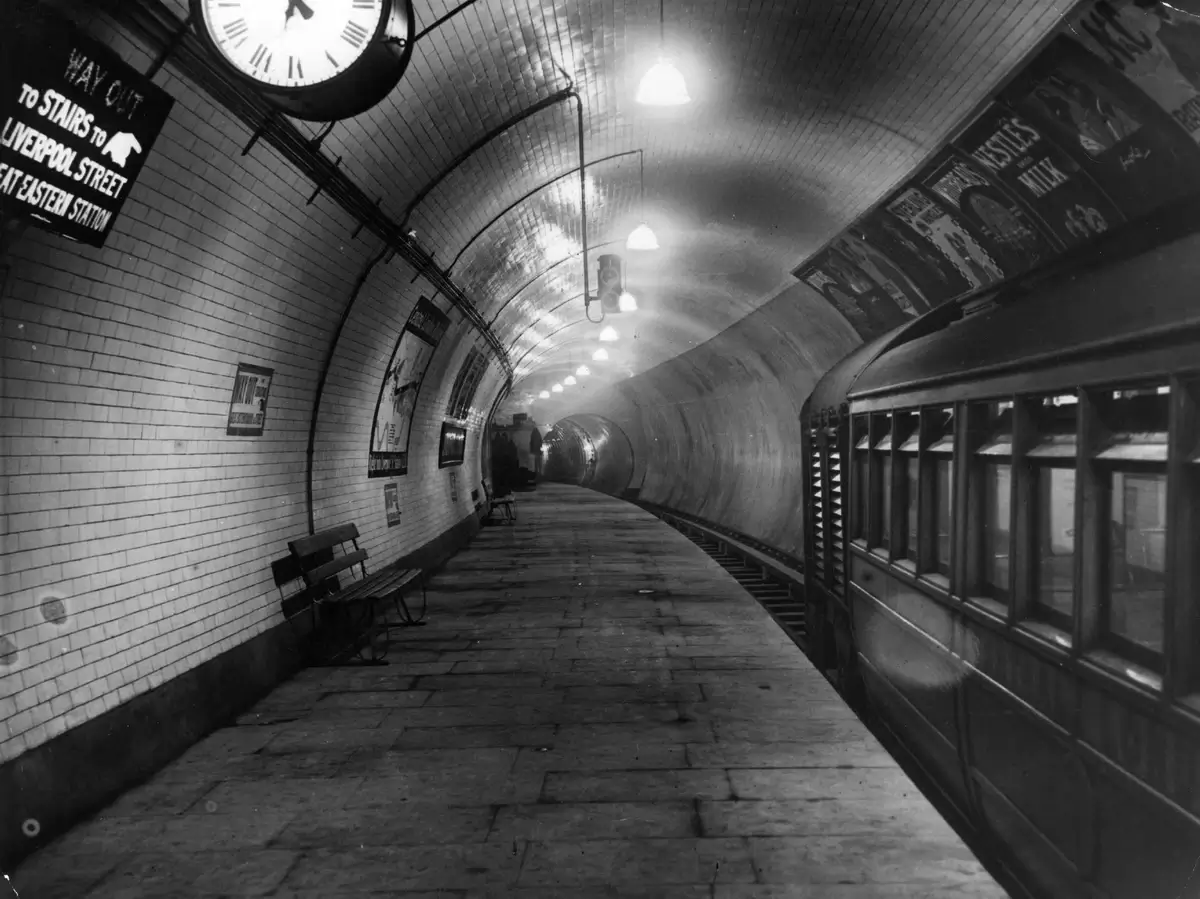
The image documents the Central London Railway’s new section at Liverpool Street Station on July 30, 1912. (Photo by Topical Press Agency / Getty Images)
The London Underground, heralded as the world’s first underground railway, opened its doors on January 10, 1863. This groundbreaking project began with the Metropolitan Railway stretching from Paddington to Farringdon, marking a monumental shift in urban transportation. Designed to alleviate surface traffic congestion, the underground network utilized steam locomotives pulling gas-lit wooden carriages. Its introduction was a resounding success, ferrying 38,000 passengers on its inaugural day and setting a precedent for urban rail systems worldwide.
The initial 3.75-mile track laid the foundation for what would evolve into a comprehensive network, addressing the city’s growing demand for efficient public transport. Over the years, the system expanded rapidly, driven by technological advancements and increasing urbanization. This transformative venture not only facilitated greater mobility within the bustling metropolis but also significantly influenced global urban planning and public transportation design.
5. Air Brakes Invention
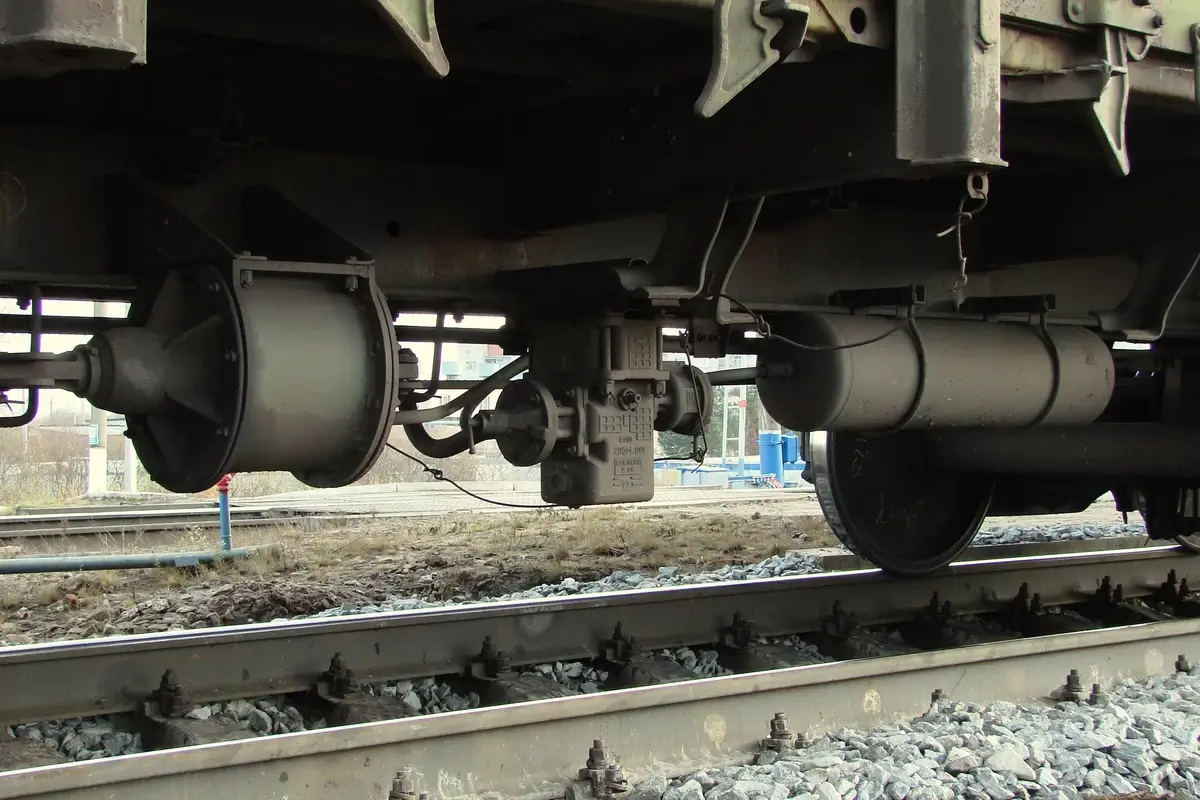
Elements of a Railway air brake. Image: Wikimedia Commons
In the late 19th century, George Westinghouse revolutionized railway safety with his invention of the air brake system. Before this innovation, train brakes were manually applied, requiring brakemen to move from car to car, a dangerous and inefficient process. Witnessing a train wreck where the inability to stop in time led to disaster, Westinghouse, at the age of 22, was inspired to create a safer, more effective system.
In 1869, he patented a railroad braking system utilizing compressed air, allowing for simultaneous brake application across all train cars directly from the engineer’s cab. This not only made trains safer by significantly reducing stopping distances but also marked a pivotal shift towards the automation of train controls. The system was fail-safe; any loss of air pressure would automatically apply the brakes, ensuring safety even in the event of a line rupture. By 1873, Westinghouse had secured a patent for his air brake system, which has since undergone numerous enhancements to become the standard in train brake technology worldwide.
6. Train Lifespan – How Long Do Trains Last?
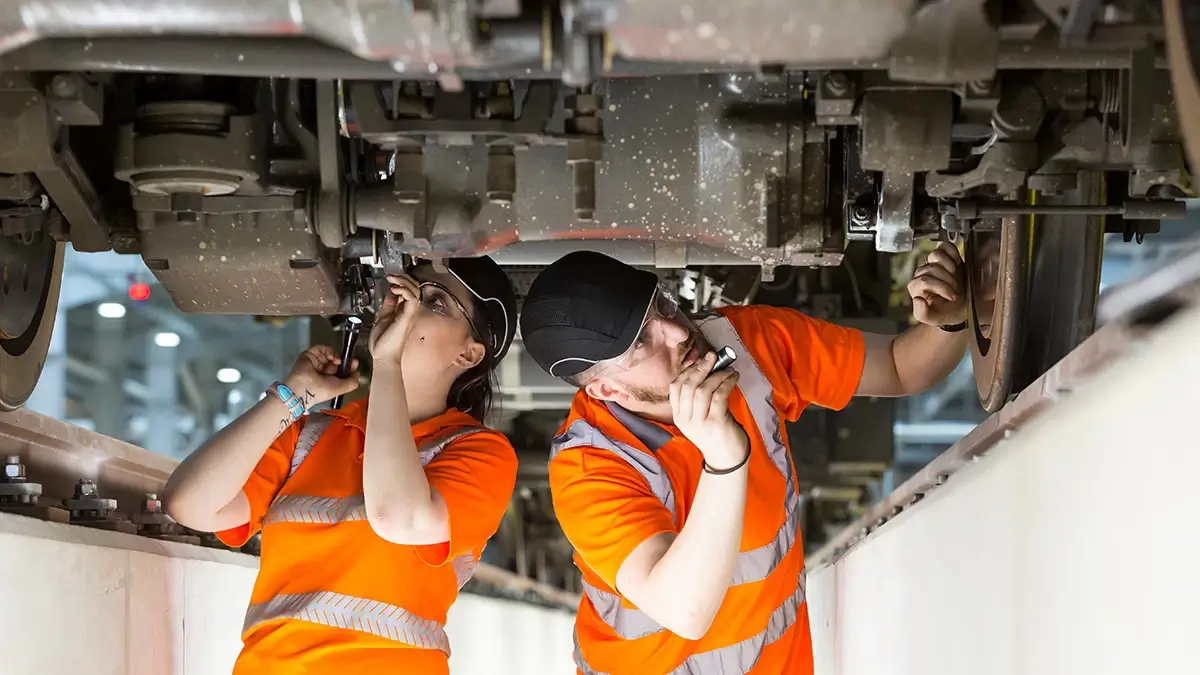
Image: railengineer.co.uk
The lifespan of trains is a fascinating subject, reflecting both technological advancements and the commitment to maintenance by railway companies. On average, trains in the United States are designed to last between 30 and 50 years. This broad range accommodates various types of trains, from passenger locomotives to freight carriers, and underscores the importance of regular upkeep and modernization.
The longevity of a train is significantly influenced by rigorous maintenance routines, including refurbishments and the replacement of worn-out parts with newer technology. Remarkably, trains built in the early 20th century are still operational on British heritage lines, thanks to extensive component replacements over the years. Similarly, trains from the 1950s and 1960s continue to serve, albeit with numerous updates to keep them running smoothly.
7. Longest Train Journey – From Porto to Hanoi
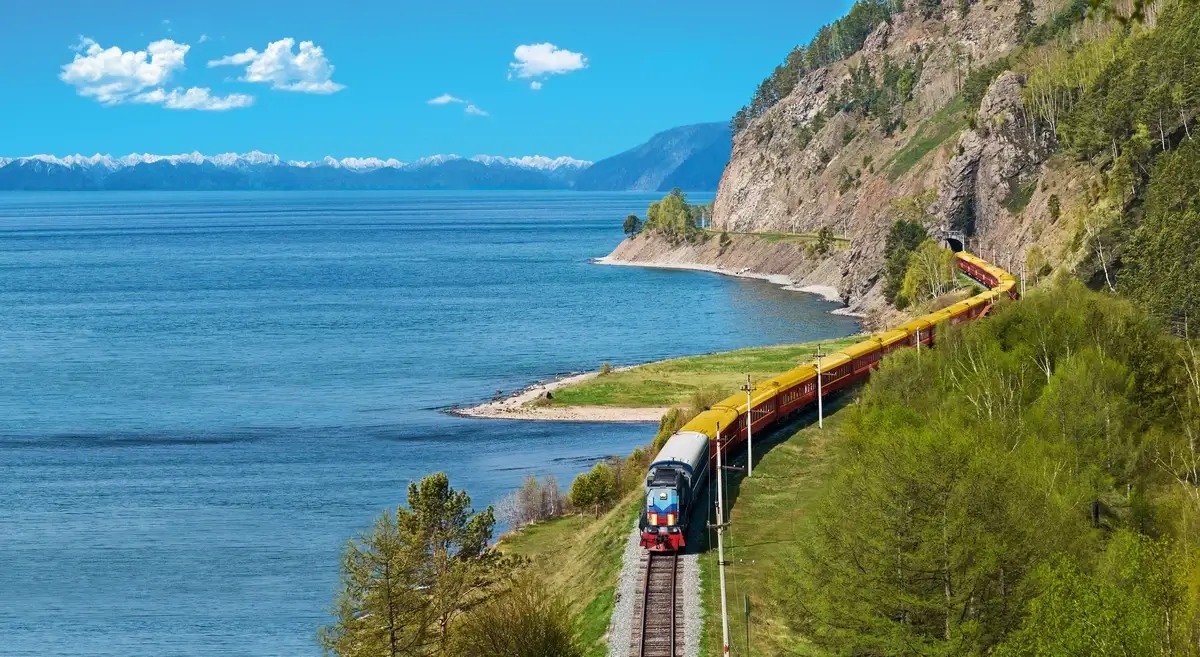
Image: kommunikasjon.ntb.no
Embarking on the longest train journey in the world takes you from the coastal city of Porto, Portugal, to the bustling streets of Hanoi, Vietnam, covering a staggering distance of approximately 17,000 km over 13 days. This monumental journey is not just a testament to endurance but offers an unparalleled way to experience the diverse landscapes, cultures, and architectures across multiple countries.
The adventure begins in Porto, where travelers board a train at Campanhã Station, heading towards Coimbra. The journey weaves through Spain, France, Germany, Poland, Russia, and China before finally descending into Vietnam. Highlights include the architectural marvels of Salamanca, the romantic allure of Paris, the historical significance of Moscow, and the breathtaking natural beauty encountered along the Trans-Siberian Railway. The final leg from Beijing to Hanoi unveils the dense urban landscapes of China contrasted against the serene rural vistas of Vietnam.
8. Shinkansen’s Aeronautical Engineering Roots

Shinkansen train. Image: X.com
The Shinkansen, Japan’s iconic bullet train, owes its aerodynamic design to aeronautical principles, partly developed by engineers with backgrounds in aircraft design. Contrary to the widespread myth, Jiro Horikoshi, the chief engineer behind the Mitsubishi A6M Zero fighter plane of World War II, did not design the Shinkansen. Horikoshi’s career was deeply embedded in aviation, where he led the development of several Japanese fighter designs during the war.
The actual aerodynamic design of the Shinkansen was influenced by Tadanao Miki, an engineer who indeed had experience with aircraft design during the war, including work on the Yokosuka MXY7 “Kamikaze” planes. This expertise was pivotal in creating the Shinkansen’s bullet-like nose, which minimized air resistance and noise, especially when entering tunnels, contributing significantly to its high-speed capabilities.
9. Lincoln’s Funeral Train
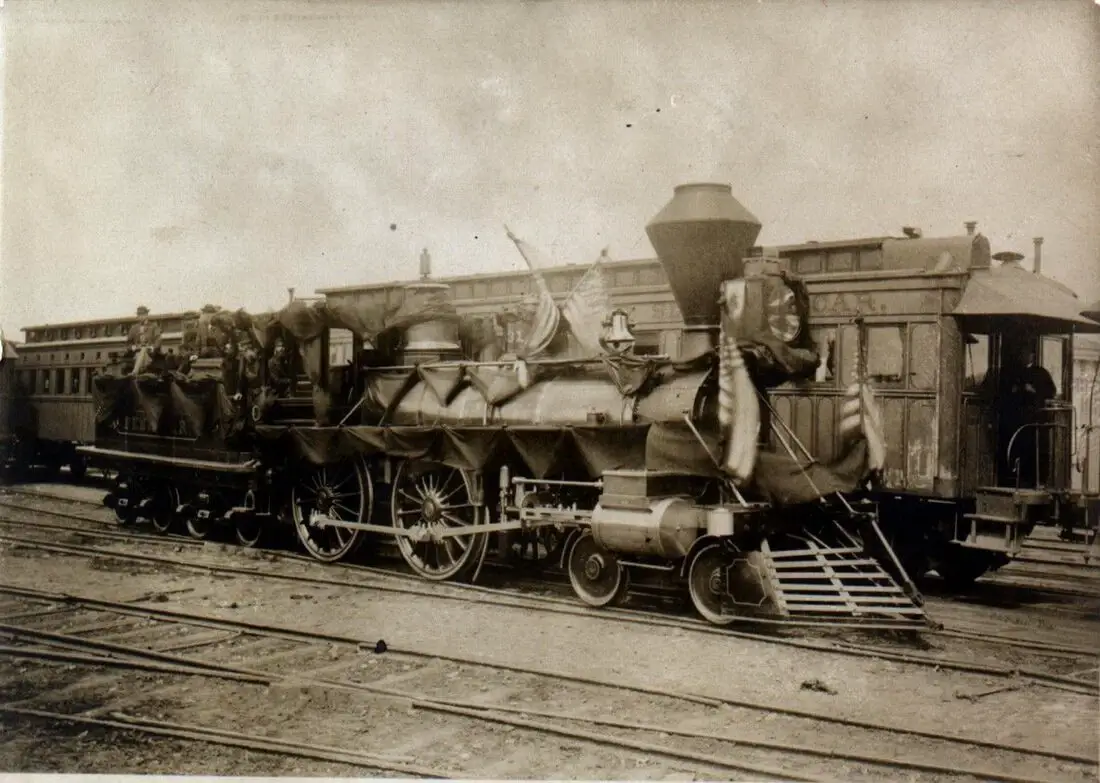
Lincoln’s funeral train. Image: lincolntrain.com
Abraham Lincoln’s funeral train marked a pivotal moment in American history, transforming public perception of train travel. After the assassination of President Lincoln on April 14, 1865, a funeral train carried his remains on a solemn 1,654-mile journey from Washington, D.C., to Springfield, Illinois, allowing the nation to mourn their leader collectively. This event, unprecedented in scale, saw Lincoln’s body, along with that of his son Willie, who had previously died in the White House, being transported through seven states, touching hearts and uniting a nation fractured by civil war.
The train, consisting of nine cars including a hearse and the President’s car, was a moving memorial, draped in mourning and accompanied by an honor guard and designated family members and officials. It traversed through major cities, where millions came to pay their respects, showcasing the power of railroads to connect disparate parts of the country both physically and emotionally. The journey underscored the railroad’s role in American life, highlighting Lincoln’s own legacy as a proponent of rail development and as a unifying figure in the nation’s history.
10. Steam Train Explosions: The Peril of Low Boiler Water
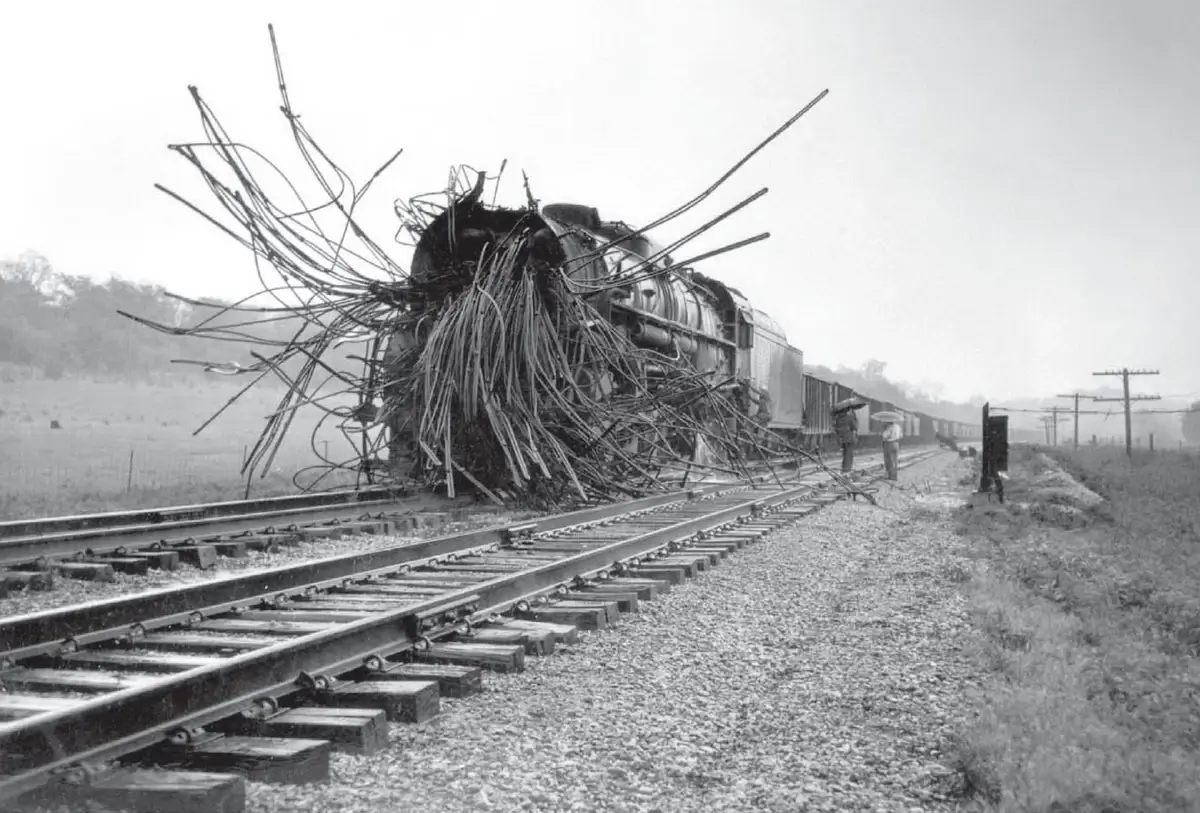
The boiler explosion of C&O T-1 #3020 in 1948. Image: myskillsconnect.com
Low boiler water levels in steam trains can lead to catastrophic boiler explosions. The crown sheet, the upper part of the firebox, must be submerged in water to prevent overheating. If exposed, the metal overheats, weakening under pressure and potentially causing the boiler to explode. The balance between operational efficiency and safety is crucial, emphasizing the importance of boiler maintenance.
Historical accounts, like the C&O T-1 #3020 explosion in May 1948, demonstrate the destructive potential of such failures. This incident, resulting from a crown sheet failure due to low water while cresting a hill, highlights the grave consequences of inadequate boiler water management.
Steam locomotive operation relies on converting water into steam, which then drives the pistons and propels the train. Maintaining water levels within safe parameters is critical, necessitating safety devices like water gauges and alarms for monitoring. Despite these measures, the risk of explosion due to mechanical failures, insufficient maintenance, or human error persisted.
Advancements in safety, including low water cutoff systems and rigorous maintenance routines, have been developed to mitigate these risks. These systems automatically halt boiler operation if water levels drop too low, while regular maintenance and inspections help prevent conditions leading to low water levels.
11. Great Train Robbery: The 1963 Royal Mail Heist
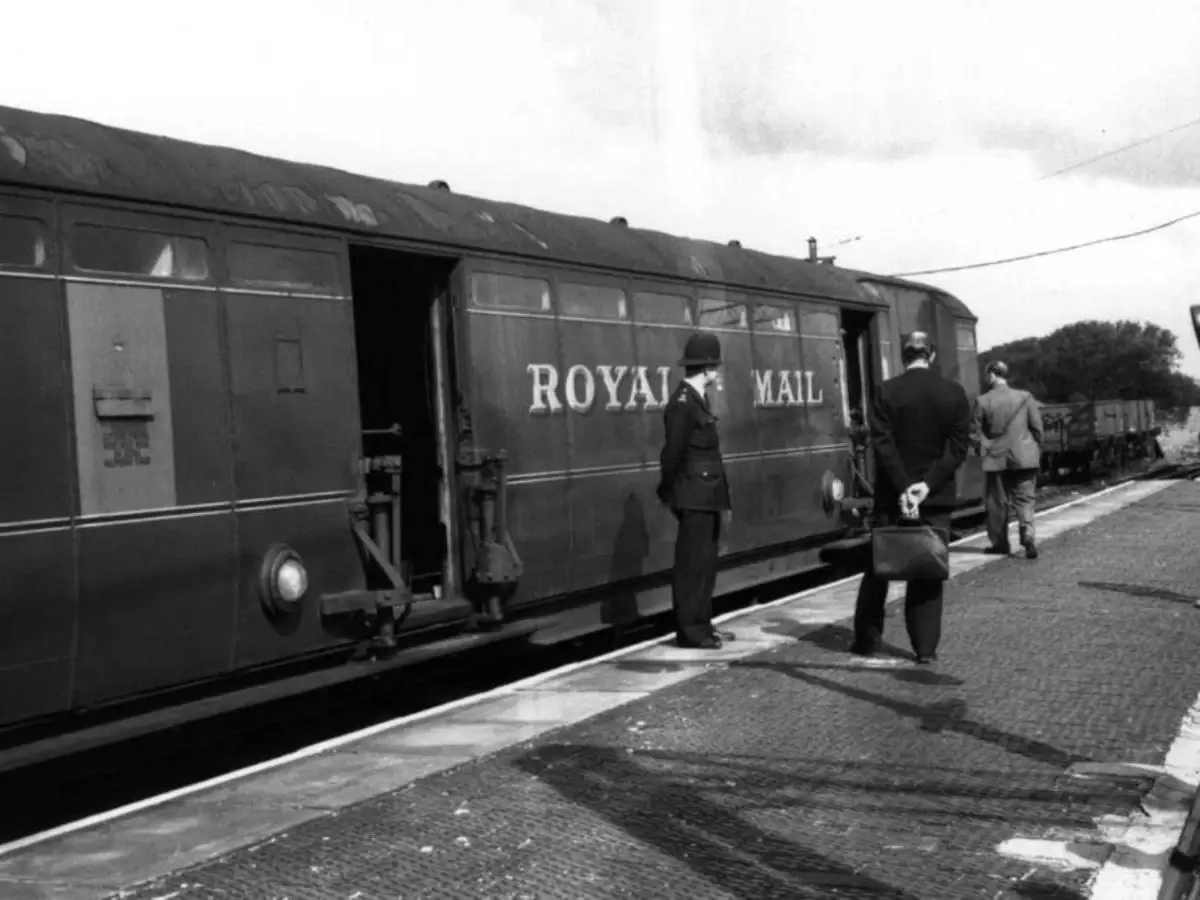
Image: indiatimes.com
The Great Train Robbery of 1963 stands as one of the most infamous heists in British history. A meticulously planned operation led to the theft of £2.6 million (equivalent to over £50 million today) from a Royal Mail train traveling from Glasgow to London. The operation was spearheaded by a gang of 15, including notable criminals like Bruce Reynolds, Gordon Goody, and Buster Edwards, based on insider information from a mysterious figure known only as “The Ulsterman.”
The heist was executed by stopping the train using tampered signal lights, after which the robbers, armed but not using firearms, overpowered the train crew. The driver, Jack Mills, was forcibly involved in moving the train to a more secluded spot, where the robbers unloaded 120 sacks of cash. Despite the violence, the only physical injury was to Mills, who suffered from lasting trauma and died seven years later from unrelated causes.
The aftermath of the robbery saw an extensive police investigation leading to the discovery of the robbers’ hideout at Leatherslade Farm, thanks to a tip from a local farm worker. This breakthrough led to the recovery of crucial evidence, including a Monopoly board with fingerprints, which ultimately resulted in the arrest and conviction of most gang members, each receiving up to 30 years in prison.
Despite the eventual capture of many involved, the bulk of the stolen money was never recovered, and the true identity of “The Ulsterman” remains unknown. The Great Train Robbery has since entered the annals of criminal legend, highlighting the audacity of the robbers and the eventual success of law enforcement in bringing them to justice.
12. Japanese Train Punctuality
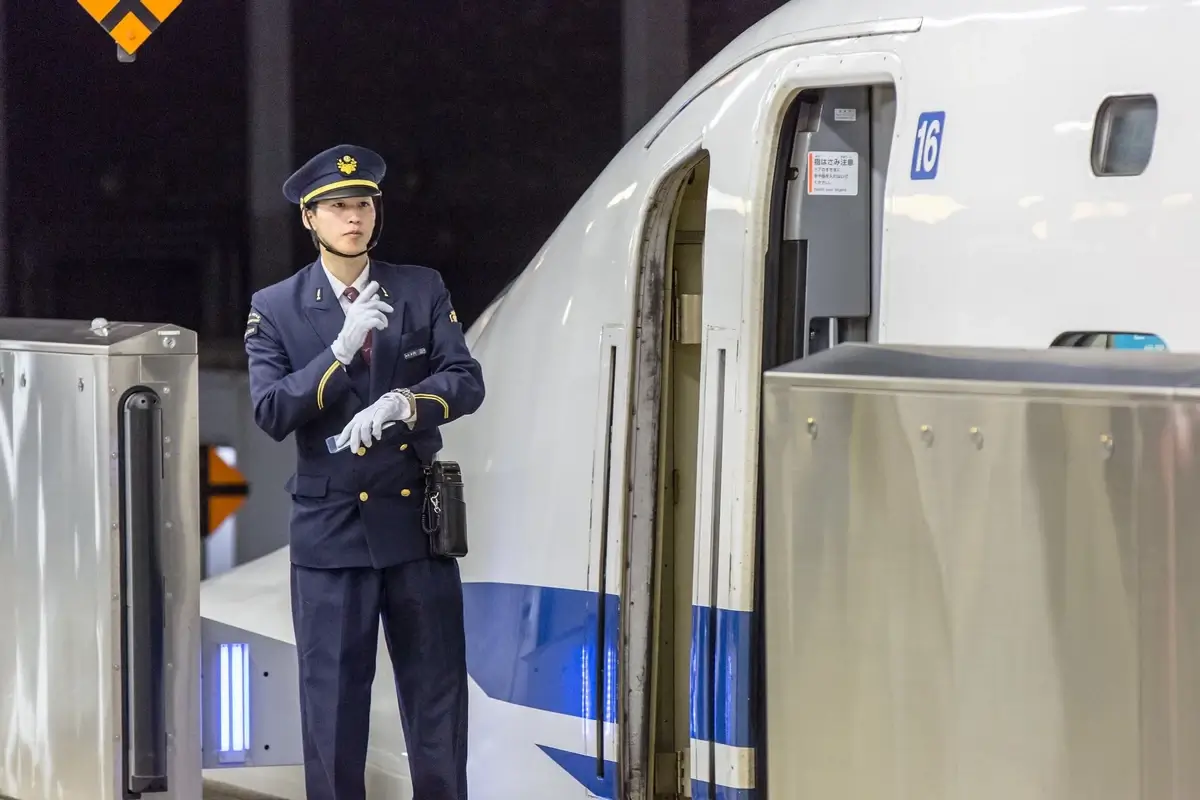
Image: mediarail.wordpress.com
Japanese trains, especially the Shinkansen or bullet trains, are globally renowned for their punctuality. An astounding figure that highlights this precision is the yearly average delay of just 30 seconds on the Tokaido Shinkansen line, even including significant delays caused by natural events like typhoons. This reliability is crucial because the high frequency of trains—up to one every 3 minutes on busy days—means any delay could disrupt the entire schedule.
The secret to this punctuality largely lies in the hands of the train conductors. Despite the high-tech nature of these trains, conductors play a pivotal role in maintaining schedule accuracy through meticulous speed calculations and strategic responses to unexpected occurrences. They are trained to adjust the train’s speed dynamically, ensuring timely arrivals and departures at each station, thus safeguarding the train’s punctuality. Their skills are honed through regular practice on simulators, preparing them to handle breakdowns without altering the train schedule.
Additionally, the efficiency of the cleaning staff contributes significantly to the punctuality of the Shinkansen. In the brief turnover time at terminals, cleaning crews swiftly and thoroughly prepare the train for its next journey, allowing it to depart on schedule. Their quick and meticulous work ensures that the train not only leaves on time but also provides a comfortable and clean environment for passengers.
13. Train Wheels and Rails: The Critical Gap for Safety
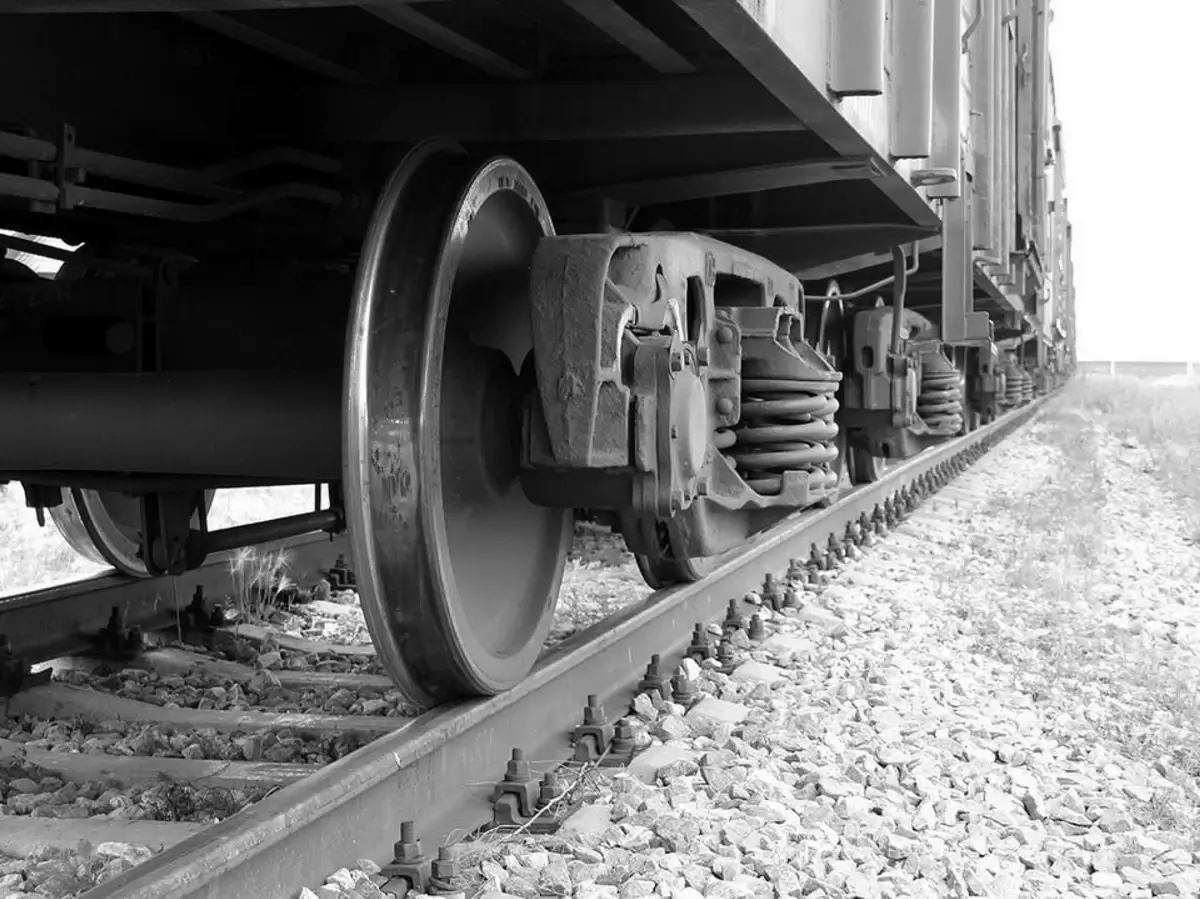
Image: hdpic.club
Train wheels and rails operate on a precision-based relationship, crucial for the safety and efficiency of rail transport. The design of train wheels, particularly the inclusion of a flange on the wheel’s inner side, ensures that trains remain on the tracks under various conditions, such as curves, side-winds, and track defects. This flange interacts with the rails, guiding the train and preventing derailment by compensating for the fixed axle that locks wheels together, forcing them to rotate at the same speed despite one wheel having to cover a longer distance on curves.
The shape of the train wheel is not purely cylindrical; it’s slightly conical, with the diameter increasing towards the inner side. This design allows the train to navigate curves smoothly, with the outer wheel traveling a greater distance due to its larger diameter, without significant skidding or wear. Additionally, the positioning of flanges inside rather than outside the wheels is a safety measure. It ensures that the lateral forces exerted by the rails onto the wheels push the wheels onto the axles, rather than off, thus significantly reducing the risk of accidents.
14. First Steam Trains: Revolutionizing Transportation
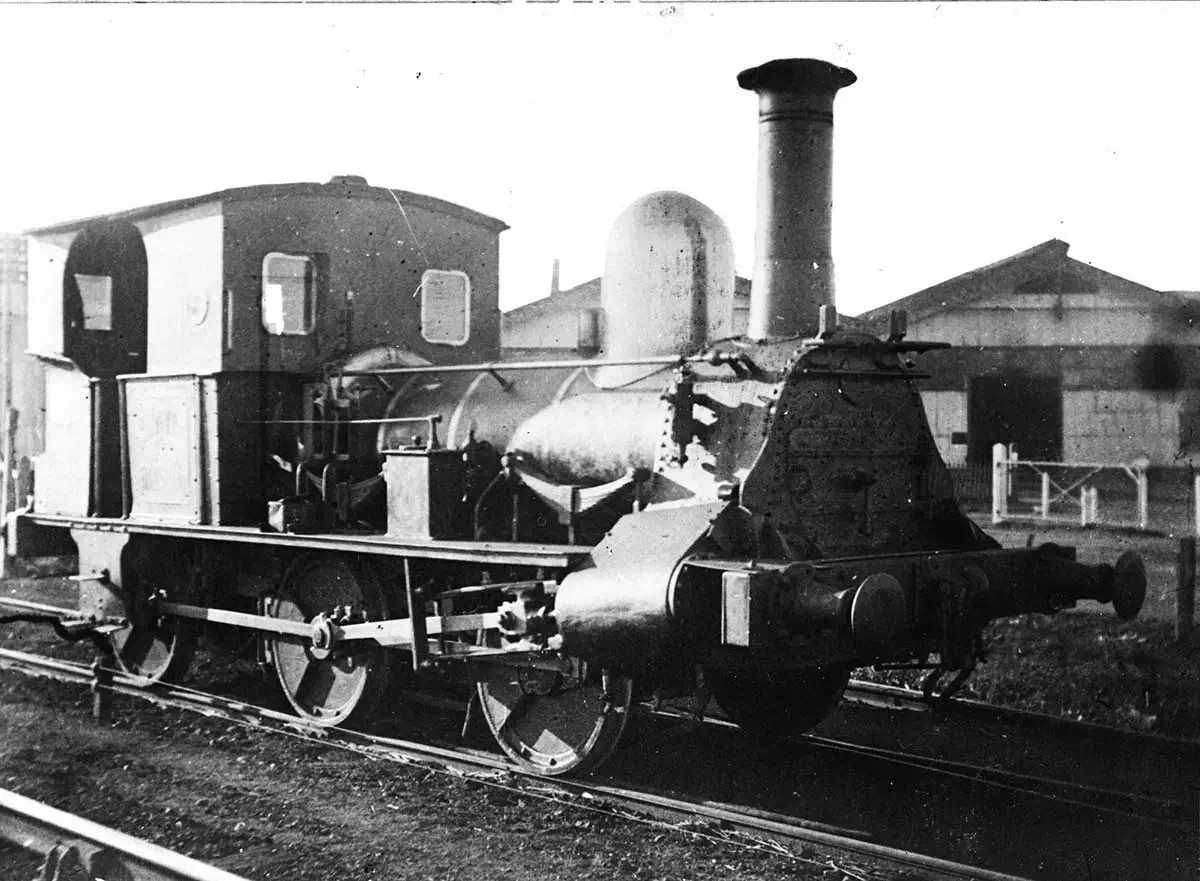
Steam locomotive No. 34 ‘Titania’. Image: nma.gov.au
The advent of the steam train in the early 19th century marked a pivotal moment in the Industrial Revolution, reshaping transportation and accelerating the pace of societal change. The journey began with Richard Trevithick’s innovation in 1804, as he successfully demonstrated a steam-powered locomotive’s capabilities in Wales, hauling a significant load over a distance. This invention laid the groundwork for future developments by engineers like George and Robert Stephenson, who were instrumental in bringing steam locomotives to public railways.
George Stephenson, often heralded as the “Father of Railways,” played a crucial role in the evolution of steam-powered transportation. His locomotive, the Rocket, became famous after its success at the Rainhill Trials in 1829, showcasing the viability of steam locomotives for passenger and freight transport. This led to the opening of the Liverpool and Manchester Railway in 1830, the world’s first fully operational railway line to exclusively use steam power for both passenger and cargo transport.
The global impact of these advancements cannot be overstated. Railways rapidly expanded across continents, transforming landscapes and economies by connecting distant regions, facilitating trade, and enabling migration. The steam locomotive became a symbol of progress and innovation, pushing the boundaries of technology and engineering during the Industrial Revolution.
15. Ghost Trains in the UK

Ghost Train in the UK. Image: mikehigginbottominterestingtimes.co.uk
The British Train Network harbors a fascinating phenomenon known as “ghost trains.” These are rail services that run with such rarity and under such obscurity that they might as well be phantoms. Often operating to avoid the bureaucratic and financial burdens associated with officially closing a line, ghost trains serve as placeholders, maintaining a minimal presence on tracks that would otherwise be forgotten.
The existence of these trains is not just a quirk of the system; it is a testament to the complexities of rail management, where the cost of keeping a service running on life support is less than the price of its termination.
16. Early Trains Powered by Gravity
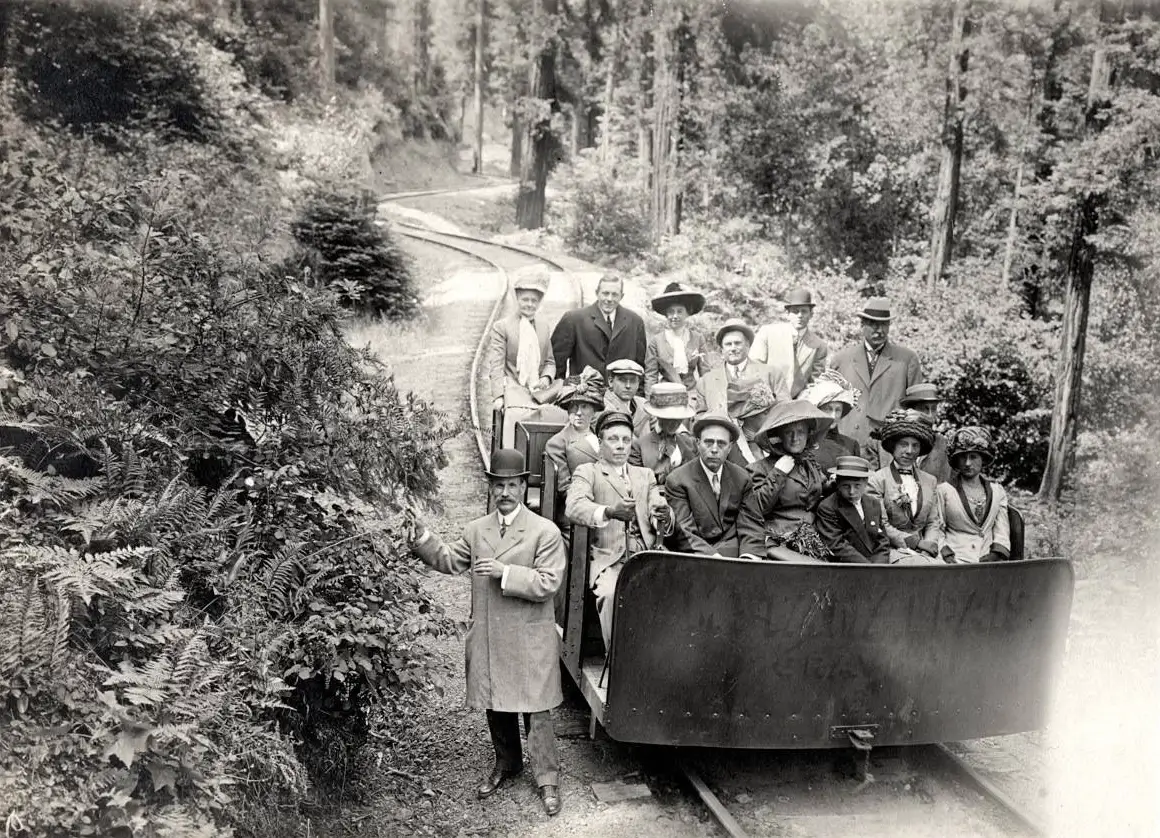
Image: friendsofmttam.org
Before the advent of steam and diesel engines, early trains were ingeniously powered by gravity and ropes. This system, known as a gravity railroad or gravity railway, capitalized on slopes to allow cars loaded with minerals or passengers to coast downwards solely under the force of gravity. The control over speed was maintained by braking mechanisms on one or more cars. Remarkably, to return the cars uphill, a combination of animal power, locomotives, or stationary engines along with cables or chains were employed.
Notably, the Mauch Chunk & Summit Hill Railroad in the United States stands out as an early adopter of this technology. Initially serving the coal industry, it later became a tourist attraction, underscoring the lasting impact of gravity railroads on both transportation and leisure industries.
Switchback gravity railroads introduced an efficient loop system without the need for passing sidings, by utilizing two separate tracks: one for loaded cars descending and another for returning empty cars uphill. This innovation was pivotal in enhancing the operational efficiency of gravity railroads, demonstrating early railway ingenuity.
The Ffestiniog Railway in Wales, established in 1832, serves as a historic example, originally designed for slate transportation from the hills to the sea. Initially, horses pulled the empty wagons uphill, but with advancements, steam haulage was adopted, showcasing the evolution of railway technology from gravity to steam power.
17. Japan’s Suicidal Train Lawsuit
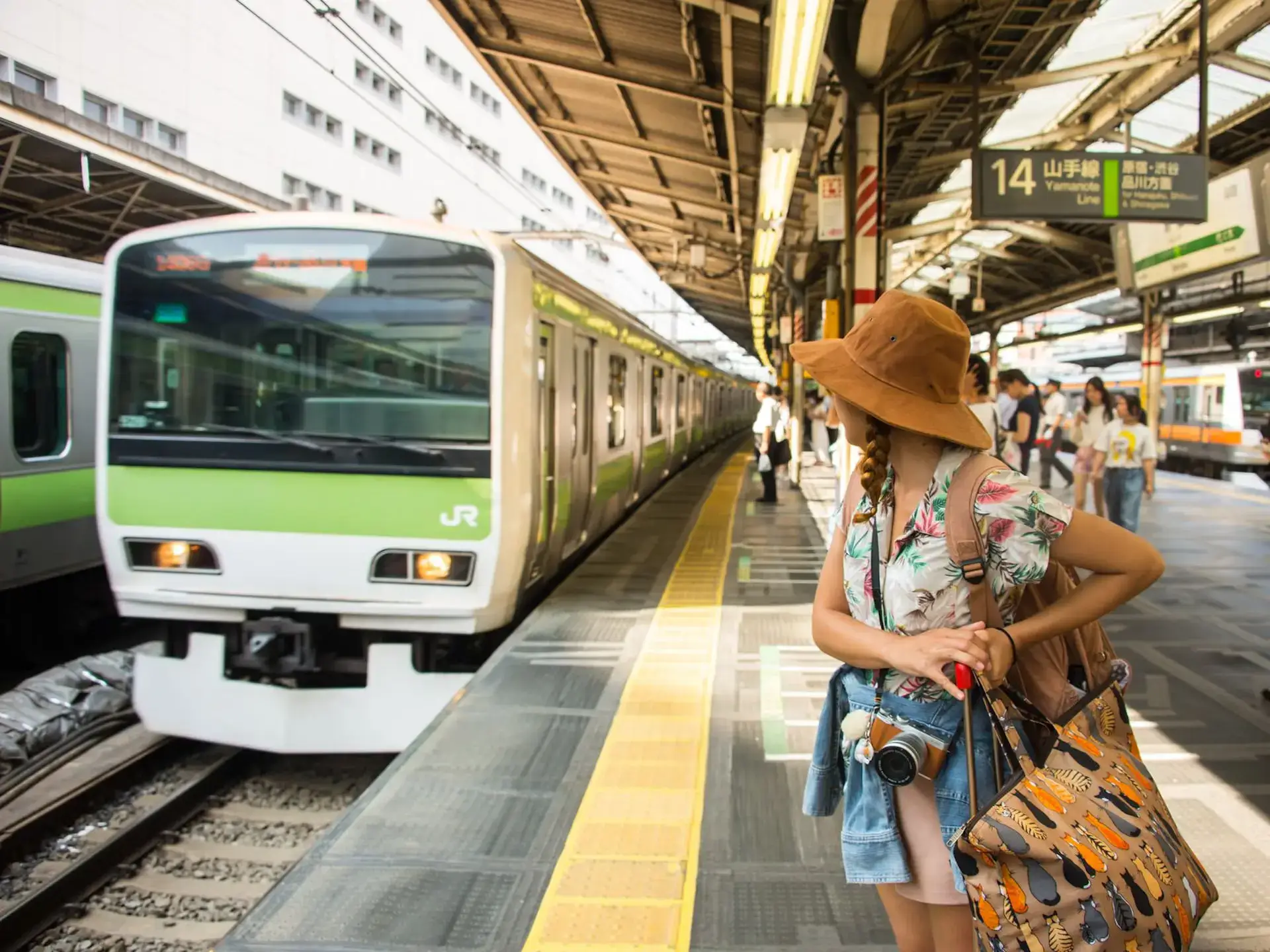
Image: lonelyplanet.com
In Japan, the societal impact of suicides extends beyond the immediate tragedy, particularly when these occur on the railway network. Not only are train suicides a considerable social issue due to the disruptions they cause in train schedules, but they also lead to legal and financial consequences for the families of the deceased.
Japan’s rail companies can, and often do, charge the families or next-of-kin for the costs associated with the rail disruption caused by suicides. This practice is based on the premise that the financial liability might deter individuals contemplating suicide, aiming to spare their families not only the emotional distress but also the potential financial burden of being sued in court. This approach is part of a broader, cultural context in which suicide has historically been viewed in various lights, ranging from a deeply stigmatized act to one associated with notions of honor in certain contexts.
The legal framework allowing for these lawsuits adds a complex layer to the country’s efforts to manage and reduce its high rates of suicide. Japan has one of the highest suicide rates among the G7 nations, with societal pressures, mental health issues, and economic factors often cited as contributing factors. The impact of train suicides is multifaceted, affecting train drivers, passengers, and the broader community, highlighting the need for comprehensive suicide prevention strategies.
18. Ore Trains’ Power Generation
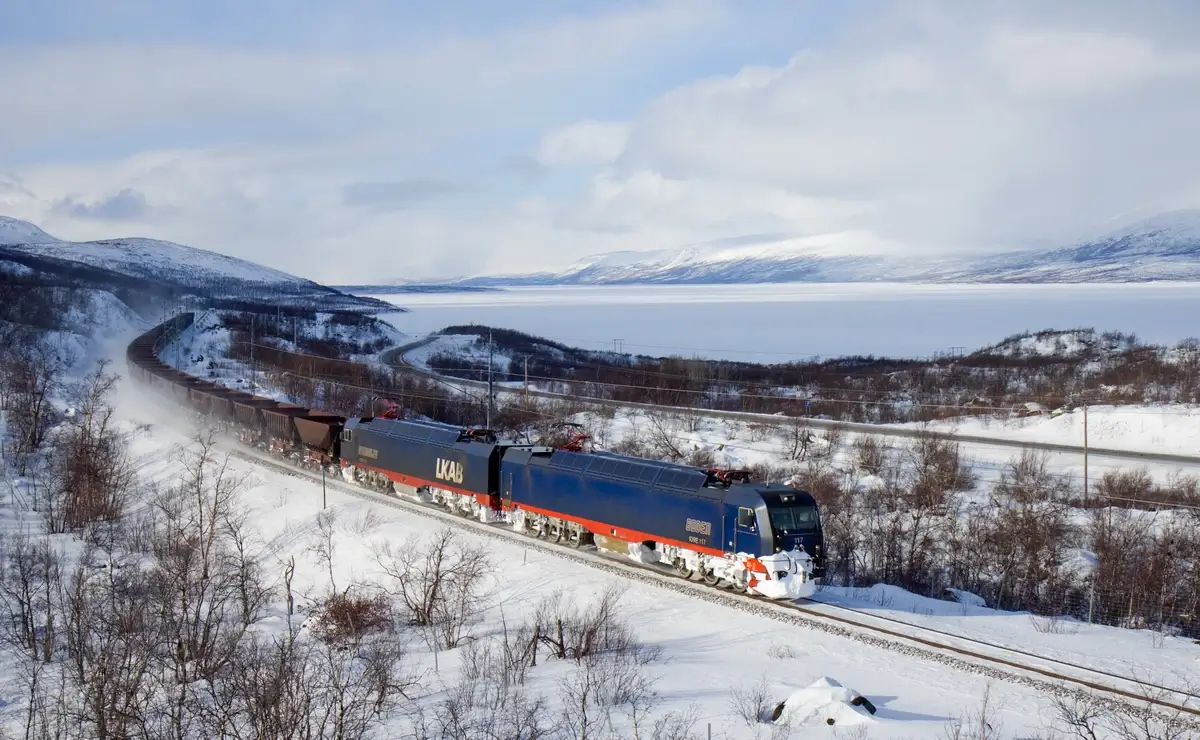
Image: Wikimedia Commons
In the breathtaking landscapes of Sweden, ore trains offer not just a marvel of engineering but also a beacon of sustainability. These trains, particularly on their journey from the mining areas down to the port of Narvik, showcase an extraordinary capability: they generate more electricity than they consume. This is achieved through the innovative use of regenerative braking, a technology that captures the train’s kinetic energy during braking and converts it into electrical energy.
The descent from Riksgränsen, at the national border, to Narvik is where this process shines. The trains leverage the gravitational pull on their loaded carriages, full of thousands of tons of iron ore, to produce significant amounts of electricity. Remarkably, they only use about a fifth of the power they regenerate during this journey. This excess electricity is then fed back into the grid, powering not just the return trip of these trains but also contributing to the local energy supply. This system exemplifies the potential for integrating transportation and renewable energy solutions, making Sweden’s ore trains a standout example of eco-friendly industrial practices.
19. The ‘Tom Thumb’ Steam Engine
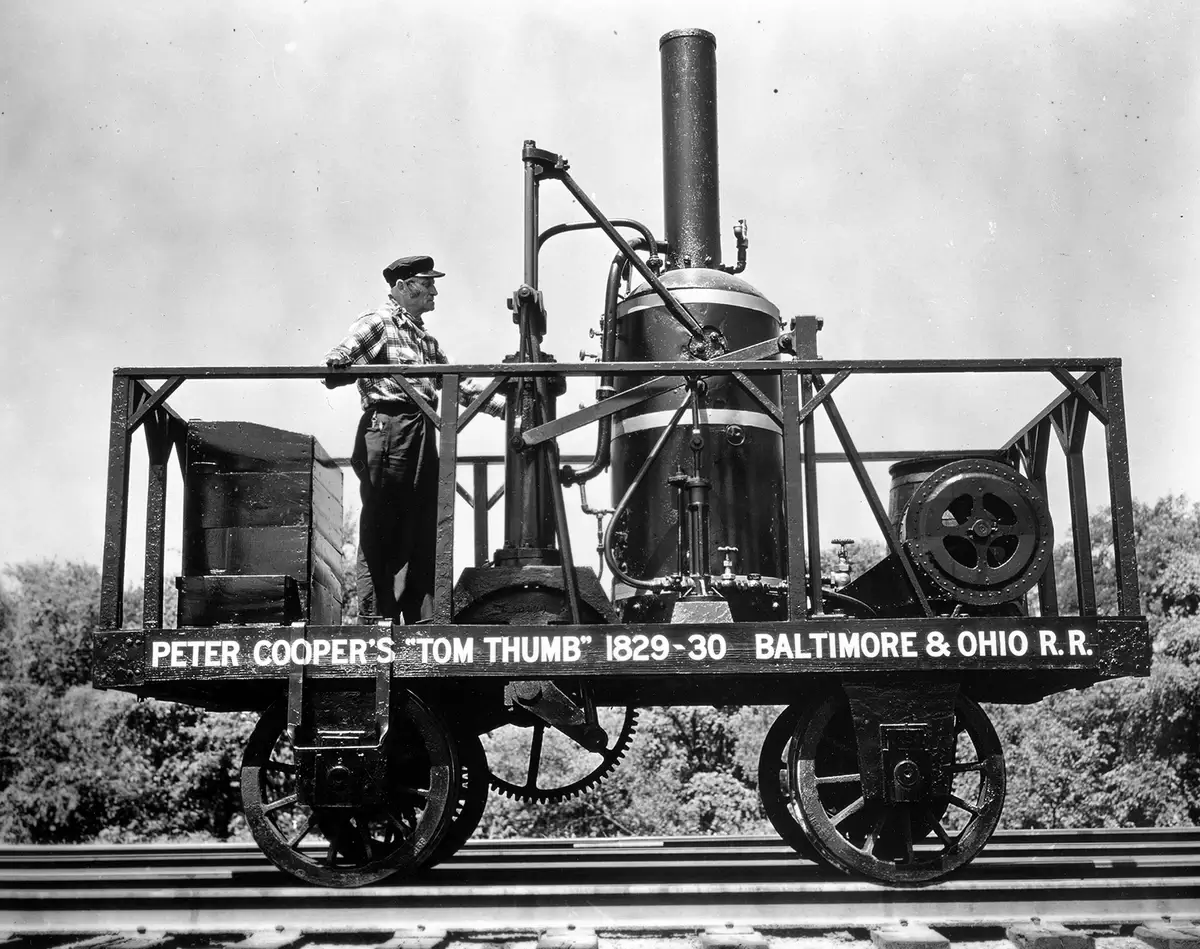
“Tom Thumb” train. Image: borail.org
The story of the “Tom Thumb” steam engine encapsulates the spirit of innovation and the early challenges faced by the burgeoning American railroad industry. Peter Cooper, an inventor and businessman, designed the “Tom Thumb” in 1830, marking a pivotal moment in the transition from horsepower to steam power in the United States. This four-wheel locomotive, characterized by its vertical boiler and improvisational design, including boiler tubes made from rifle barrels, was a testament to American ingenuity. It was not intended for revenue service but served as a demonstration of the potential for steam locomotives on the Baltimore and Ohio Railroad (B&O).
On August 28, 1830, the “Tom Thumb” engaged in a legendary race against a horse-drawn car, illustrating the competitive spirit of the age and the skepticism surrounding new technology. Despite initially outpacing the horse, the locomotive ultimately lost the race due to a mechanical failure—a slipped belt off the blower pulley, which reduced its steam power. However, this event did not dampen the enthusiasm for steam power; instead, it underscored the locomotive’s superior performance and potential. By January 1831, the B&O Railroad was moving full steam ahead, offering a prize for the development of a more robust engine, leading to the retirement of horses in favor of steam locomotives by 1836.
The “Tom Thumb” was not preserved, but its legacy endures through replicas and detailed descriptions that allow us to appreciate its historical significance. This small but mighty locomotive demonstrated that steam power was the future of transportation, setting the stage for the rapid expansion and evolution of the railroad industry in the United States and beyond.
20. First Travel Agency Thanks to Trains
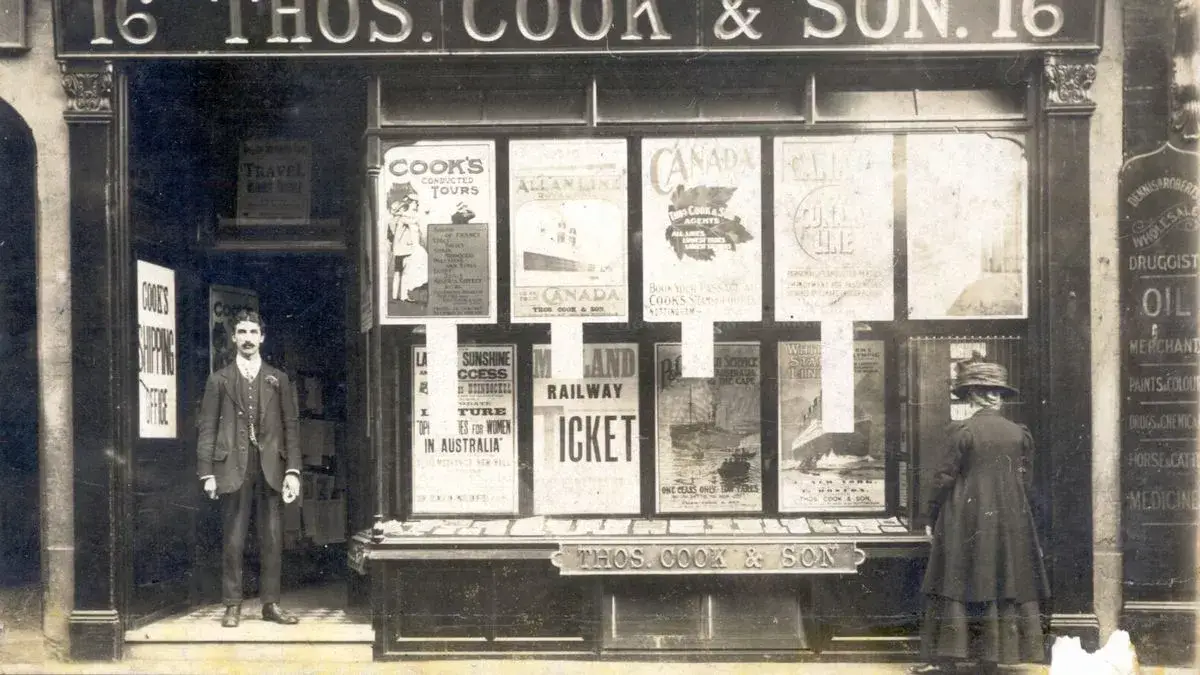
An early example of a Thomas Cook travel agency was located on Clumber Street in Nottingham. Image: staffordshire-live.co.uk
The genesis of the travel agency industry can be traced back to a pioneering moment in 1841, when Thomas Cook, driven by a blend of entrepreneurial spirit and social reform zeal, orchestrated the first public excursion train. This journey, transporting 500 passengers from Leicester to Loughborough for a temperance meeting, was not just a trip but a historic leap towards organized tourism. Charging a shilling per head, Cook not only introduced many to train travel but also laid the foundation for the world’s first travel agency. This marked the beginning of modern leisure travel, transforming how people experienced the world.
Cook’s endeavor blossomed into an empire that democratized travel, making it accessible and affordable. His innovative approach included package tours, travel vouchers, and traveler’s checks, significantly influencing the travel industry’s evolution. By organizing trips that catered to the educational and recreational needs of the working class, and later the middle class, Cook harnessed the power of the railways to broaden horizons and bring about social change. His legacy, a testament to the transformative potential of travel, continues to inspire the tourism industry today.
21. Historic Train Stunts Gone Wrong: The Crash at Crush
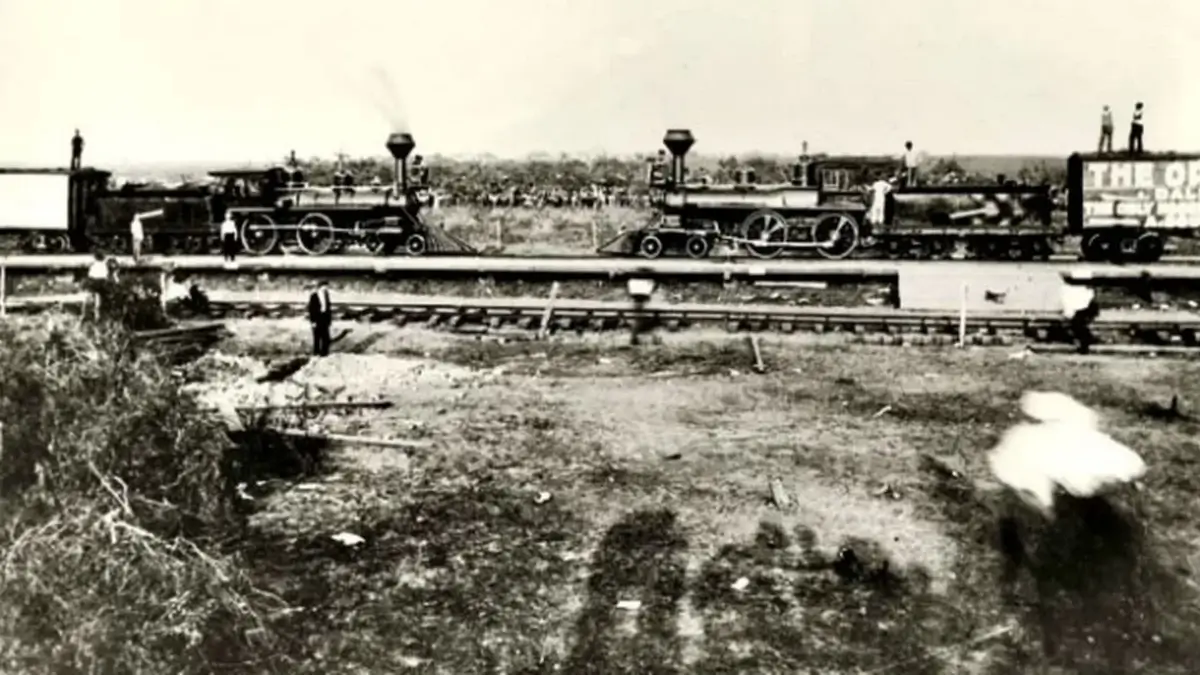
Image: Reddit
In an event that stands as a grim testament to the dangers of overambition in publicity stunts, the “Crash at Crush” in 1896 turned from a spectacle to a tragedy. William George Crush, a passenger agent for the Missouri-Kansas-Texas Railroad Company, envisioned a grandiose event where two locomotives would collide head-on as a public spectacle. Despite assurances of safety, the event resulted in the boilers of the trains exploding upon impact, sending deadly shrapnel into the crowd of over 40,000 spectators, killing three and injuring several others.
This stunt was meticulously planned, with a temporary town named Crush, Texas, set up just for the occasion. The event featured not just the crash but also a carnival atmosphere with food stands, games, and live music to entertain the massive crowd that gathered. Tickets were sold at $2 for round-trip transportation from anywhere in Texas, a strategy that packed trains to capacity, some spectators even riding atop cars for lack of space inside.
However, the excitement turned to horror when, contrary to engineers’ assurances, the impact caused the locomotives’ boilers to explode, launching debris into the crowd. The aftermath saw quick action from the Katy Railroad to settle claims with the victims’ families, offering cash and lifetime rail passes. William Crush was briefly fired, only to be rehired the next day, his career with the Katy continuing for decades after.
The event left a mark on popular culture, inspiring Scott Joplin, a ragtime composer who was in the region at the time, to write “The Great Crush Collision March,” a piece commemorating the event. A historical marker now stands near the site, a sober reminder of the day entertainment turned to tragedy.
FAQ
Why is train called train?
The term “train” originates from the Old French word “trahiner,” derived from the Latin “trahere” meaning “to pull” or “to draw.” Initially, it referred to a line of pack animals or vehicles drawn along a path. Over time, as technology evolved, the term was applied to locomotives and the carriages they pulled, reflecting the action of being drawn along a track.
How quickly can a train stop?
The stopping distance of a train depends on its speed, weight, and the braking system’s efficiency. A passenger train traveling at 80 km/h (50 mph) can take about 600 to 900 meters (1,970 to 2,950 feet) to stop under normal conditions. Freight trains, which are heavier, might take longer distances to come to a complete stop. High-speed trains equipped with advanced braking systems can still require over a kilometer to stop when traveling at high speeds.
How fast can a train go?
The speed of a train varies widely depending on its type and purpose. Freight trains typically move at lower speeds, ranging from 24 to 75 km/h (15 to 47 mph), while passenger trains operate at speeds between 120 to 320 km/h (75 to 200 mph). High-speed trains, designed for rapid transit, can exceed speeds of 320 km/h (200 mph), with some capable of reaching speeds up to 430 km/h (267 mph) under certain conditions.
Who made the first train?
The first full-scale working railway steam locomotive was built by George Stephenson, an English engineer, in 1814. However, the first public railway to use steam locomotives, the Stockton and Darlington Railway, was opened in 1825, also in England, marking the beginning of railway transport as it is known today.
How heavy is a train?
The weight of a train can vary significantly based on its type, length, and cargo. A typical freight train in North America can weigh anywhere from 4,000 to 20,000 metric tons (4,409 to 22,046 US tons). Passenger trains are generally lighter, with a single car weighing between 30 to 60 metric tons (33 to 66 US tons), and an entire trainset can weigh from 400 to 800 metric tons (441 to 882 US tons) depending on the number of cars.
What’s the fastest train in the world?
The title of the fastest train in the world was held by the Shanghai Maglev in China, with commercial speeds of 431 km/h (268 mph). The Maglev technology allows for this high speed by using magnetic levitation to lift the train off the track, reducing friction and enabling faster speeds.


